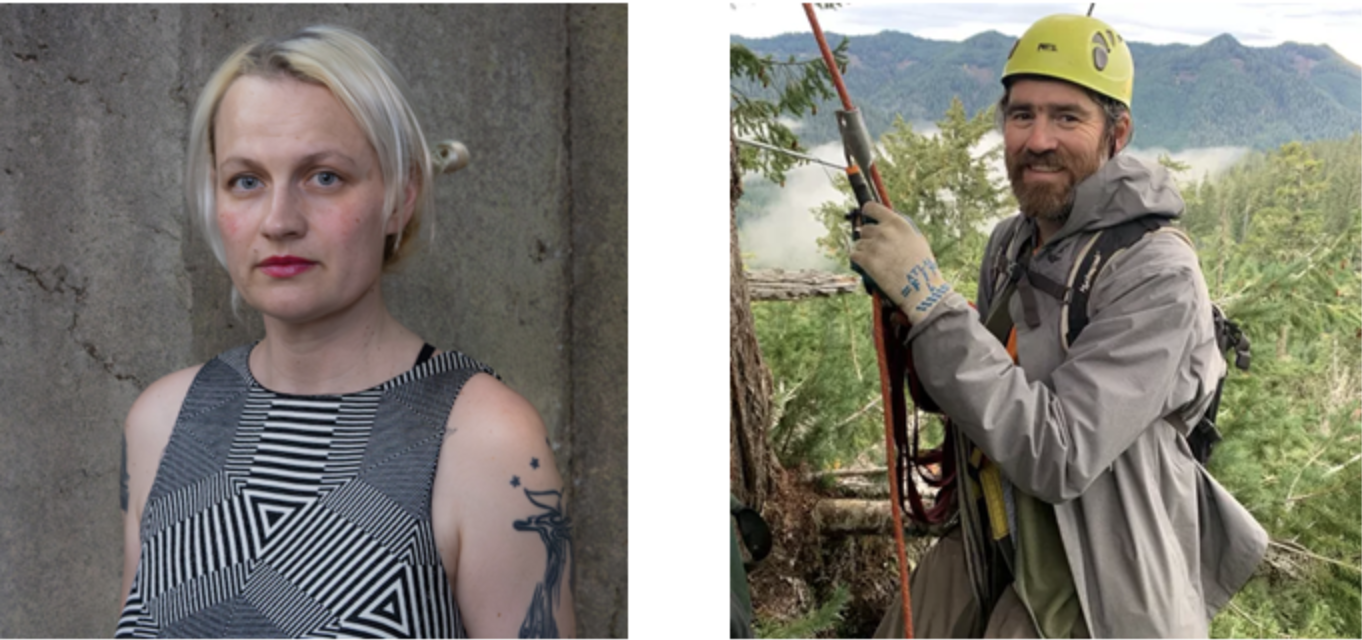
Project
FLUX is a multi-channel video installation that explores ecological cycles through color data using a range of lens-based technologies. By transforming scientific imagery and field data into immersive visual experiences, Julia Oldham’s artwork offers a dynamic and expansive visual examination of changing landscapes in the Pacific Northwest USA.
Artist Bio
Julia Oldham is a digital media artist with a research intensive practice, frequently involving scientists as collaborators. She visualizes the uneasy collision of nature and technology in a fragile world. She documents extant environments such as the Chernobyl Exclusion Zone in Ukraine, clear cut forests in Oregon, and swaths of derelict wilderness in New York City. She also builds fictional worlds through drawing and animation. With tenderness and humor, Julia explores her own conflicting feelings about human progress through her narrative works, envisioning speculative futures and exploring scientific history. Discover more of Julia’s work at juliaoldham.com and follow @juliaoldham.
Science Collaboration
Research in the Still lab focuses on the physiological responses of forests and grasslands to seasonal and interannual weather variation and ongoing climate change, along with resulting impacts of those changes on carbon and water cycling. This research is conducted at different space scales, from plants to ecosystems, and combines measurements with remote sensing and process modeling. A major effort of Still’s research group is running the Metolius site cluster. These sites span a range of forest ages and sizes as well as disturbance history from fire and logging and are located along one of the steepest precipitation gradients in North America from the Cascade crest eastward to the Oregon high desert. Research at these sites includes eddy covariance-based measurement of carbon, water, and energy exchanges, as well as monitoring tree water fluxes using sap flow sensors, soil carbon fluxes using chambers, as well canopy temperature, structure and functioning with various imagers.
News and Activities
May 6, 2025: Ameriflux Metolius (US-Me6 and US Me4) site visits and field recordings, OR
April 28, 2025: Ecoinformatics Lecture, Richardson’s Lab, Northern Arizona University, Flagstaff, AZ (news story) April 21, 2025: Ameriflux Metolius (US-Me4) research site visit and drone footage collection, OR
March 12, 2025: Forest, Ecosystem and Society Lecture, Still’s lab, Oregon State University, OR
February 12, 2025: Ameriflux Metolius (US-Me4) research site visit and drone footage collection, OR
December 11, 2024: 18//Flux video presentation, Google Booth, American Geophysical Union Annual Meeting, Washington DC (news story)
December 10, 2024: FLUX public artist lecture, Sitka Center for Art and Ecology in Otis, OR
November 12, 2024: FLUX public artist lecture, The Evergreen State College in Olympia, WA
October, 2024: Ameriflux Bartlett Experimental Forest (US-Bar) site visit, NH
September 12, 2024, public art lecture, University of Wisconsin, Madison WI
September 4, 2024: 18//Flux and Forest Palette presentation, Ameriflux annual meeting, Berkeley CA (news story)
July 15, 2024: Ameriflux Metolius (US-Me6) site visits and solar induced fluorescence campaign, OR
June 2024: Ameriflux Metolius (US-Me4 and US-Me6) site visits and field recordings, OR (news story)
Artwork
Pondering: 4-channel video documentation of a field research site in the Deschutes National Forest(see more)
Analemma: Collaborative video project with Dr. Dave Bowling and Dr. Andrew Richardson, which mapped an analemma shape using PhenoCam data from an Ameriflux tower in Flagstaff, AZ. (see more)
Forest Palette: Series of video pairings, arranging 10-color palettes and timelapses extracted from the PhenoCam network observations. (see more)
18//Flux: Timelapse videos organizing RGB data into hourly stripes to show over a decade of tree growth in 3 minutes from PhenoCam sites in Oregon and Washington. (see more)
Canopy: Three views of the canopy of a ponderosa forest in Central Oregon: 360-degree camera, PhenoCAm timelapse, and color palettes. (see more)
Acknowledgements

